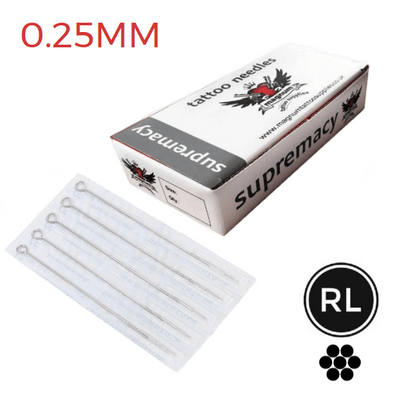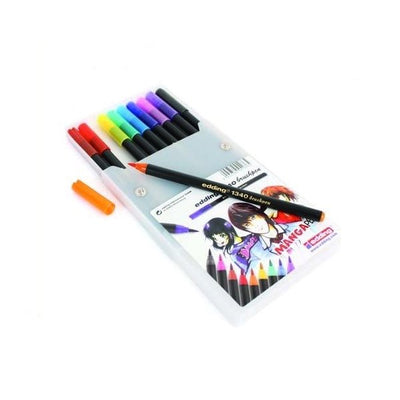Tattoo is an exciting way to express yourself and create lasting memories. But, while most people walk away with nothing but a beautiful new piece of art, some might experience unexpected skin reactions. From itching to more serious skin conditions, it's important to know what could happen when you get inked.
So, we'll break down the different types of allergic reactions and skin issues that can come with tattoos, and share some tips on how to prevent these so you can enjoy your tattoo without any worries.
Types of allergic reactions to tattoos
Immediate allergic reactions
Immediate allergic reactions to tattoos typically manifest within minutes to hours after the tattoo is applied. The most common tattoo allergy symptoms include redness, itching, swelling, and sometimes a rash or hives around the tattooed area. These reactions occur because of hypersensitivity to the materials used during the tattooing process, particularly the ink.
Certain pigments, especially red and yellow, are more likely to cause immediate reactions due to their chemical composition, which may include metals like mercury sulfide or cadmium.
Although these reactions are usually mild, they can cause significant discomfort and may require treatment with topical corticosteroids or antihistamines.

Delayed allergic reactions
Delayed allergic reactions can appear weeks, months, or even years after getting a tattoo. Unlike immediate reactions, these occur when the body's immune system gradually becomes sensitised to the components in the tattoo ink, leading to what is known as a tattoo ink allergy. Symptoms often include persistent itchiness, bumps or nodules, redness, and swelling.
Common allergens in tattoo inks that may trigger delayed reactions include metals such as nickel, chromium, and cobalt, as well as various preservatives and pigments.
These tattoo reactions may be particularly problematic as they can worsen over time or with exposure to sunlight, necessitating ongoing management or, in some cases, removal of the tattoo.
Photoallergic reactions
Photoallergic reactions are a specific type of delayed allergic reaction triggered by exposure to sunlight. Certain tattoo pigments, particularly yellow and red pigment tattoo inks, can interact with ultraviolet (UV) light, leading to an immune response.
Symptoms typically include itchy red patches or bumps on the tattooed skin, which appear after sun exposure. These reactions occur because the UV light alters the chemical structure of the ink, making it more likely to trigger an allergic response.
Preventing photoallergic reactions involves minimising sun exposure and applying high-SPF sunscreen to the tattooed area, especially in the initial months after getting the tattoo.
Granulomatous reactions
Granulomatous reactions occur when the immune system perceives the tattoo ink particles as foreign bodies and attempts to "wall them off" by forming granulomas. These are small, hard nodules that can appear around the tattooed area.
This type of reaction is more common with inks containing red, green, or blue tattoo ink pigments. Granulomatous reactions are typically localised, but they can be persistent and sometimes require medical intervention, including anti-inflammatory medications or, in some cases, removal of the affected part of the tattoo.
Systemic allergic reactions
Systemic allergic reactions to tattoos are rare but can be severe and potentially life-threatening. These reactions can affect the entire body, with symptoms that include widespread hives, swelling of the face, lips, or throat (known as angioedema), and difficulty breathing or swallowing, which are signs of anaphylaxis.
Such tattoo allergic reactions are usually triggered by a systemic allergy to one or more components in the tattoo ink. Immediate medical attention is needed in these cases, as anaphylaxis can be deadly if not treated immediately. Treatment typically involves the administration of epinephrine and other emergency measures.
Contact dermatitis
Contact dermatitis is a common skin reaction that can occur when the skin becomes irritated or allergic to substances used during the tattooing process, such as ink, antiseptics, or aftercare products.
Symptoms include red, itchy, inflamed skin at the site of the tattoo, and in severe cases, blistering or oozing can occur. This reaction is usually due to direct irritation or an allergic response, and it can be managed by avoiding the irritant or allergen and using treatments like topical corticosteroids or antihistamines to reduce inflammation and discomfort.

Pseudolymphomatous reactions
Pseudolymphomatous reactions are an immune response where lymphocytes, a type of white blood cell, accumulate at the tattoo site, causing the skin to become thickened and raised, resembling lymphoma.
This reaction is relatively rare and is often associated with itchiness and discomfort. It can occur due to the immune system's reaction to certain tattoo inks, particularly those with more complex chemical compositions.
Treatment may involve corticosteroids or other anti-inflammatory drugs, and in some cases, tattoo removal may be necessary to resolve the condition.
Hypersensitivity reactions
Hypersensitivity reactions are a chronic form of allergic response where the immune system overreacts to the components in tattoo ink. These reactions can cause prolonged itching and discomfort and may even lead to the development or exacerbation of chronic skin conditions like eczema or psoriasis in the tattooed area.
Hypersensitivity reactions can be challenging to manage, often requiring long-term treatment with topical or oral medications to alleviate symptoms. These tattoo allergies highlight the importance of being aware of personal allergies before getting a tattoo and choosing inks and practices that minimise the risk of being allergic to tattoo ink.
Tattoo ink and its role in allergic reactions

Tattoo ink plays a significant role in allergic reactions because it contains various chemicals, metals, and pigments that can trigger the immune system. Some common allergens found in tattoo inks include metals like nickel, chromium, and cobalt, as well as preservatives and certain colourants.
These substances can cause the body to react, leading to itching, redness, swelling, and, in more severe cases, granulomas or systemic reactions.
The composition of tattoo ink is not always well-regulated, meaning the presence of potential allergens can vary, making it important to choose high-quality inks and consider patch testing before getting a tattoo.
Prevention of tattoo-related skin conditions
- Choose a reputable tattoo artist and studio: Ensure the tattoo artist follows safety protocols and strict hygiene to minimise the risk of complications and infections.
- Use high-quality, non-reactive inks: Opt for inks that are known to be less likely to cause allergic reactions, and avoid inks containing metals or other common allergens.
- Patch testing: Conduct a patch test before getting a tattoo, especially if you have a history of skin allergies, to check for potential reactions to the ink.
- Consult a dermatologist: Ask advice from a dermatologist if you have a history of skin conditions or allergies before getting a tattoo.
- Proper aftercare: Follow the tattoo artist's aftercare instructions carefully, keeping the tattooed area clean and moisturised and avoiding scratching or picking at the area.
- Avoid sun exposure: Protect the tattooed area from direct sunlight, especially in the initial healing period, by using sunscreen or covering the area with clothing.
- Avoid harsh chemicals: Refrain from using harsh soaps, alcohol-based products, or fragranced lotions on the tattooed area to prevent irritation.
- Monitor for signs of infection or reaction: Keep an eye on the tattoo for any unusual changes, such as excessive redness, swelling, or discharge, and seek medical attention if needed.
- Avoid tattoos if prone to keloids: If you have a tendency to develop keloids, consider avoiding tattoos or consult with a medical professional beforehand.
Final thoughts
While tattoos are a great way to express yourself, it's important to be aware of the potential for allergic reactions and skin issues. By taking the right precautions and using proper aftercare, you can keep your tattoo looking great and avoid any problems.
If you're planning to get a tattoo or already have one, investing in high-quality aftercare products and safe, reputable tattoo inks is essential. Visit our website to explore a wide range of aftercare essentials, top-grade tattoo inks, and other tattoo-related products designed to keep your skin healthy and your ink vibrant.



























































 Studio supplies
Studio supplies












 Power & batteries
Power & batteries








 Aftercare
Aftercare





















 Apprentice
Apprentice


 Piercing & jewellery
Piercing & jewellery







 PMU supplies
PMU supplies




 New arrivals
New arrivals
 Gift vouchers
Gift vouchers
 Shop all
Shop all















































